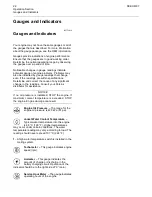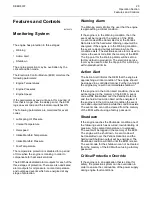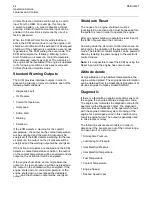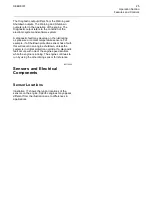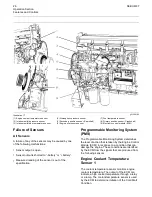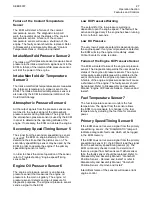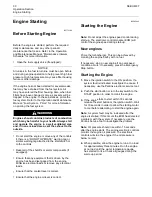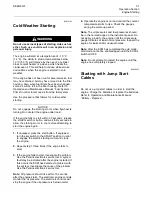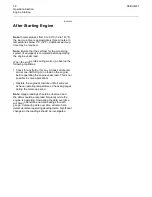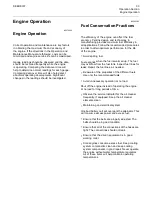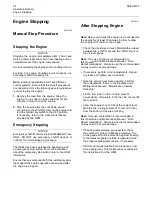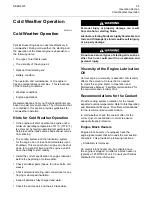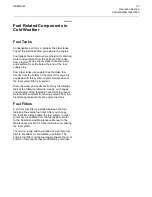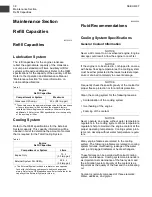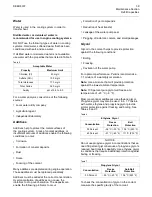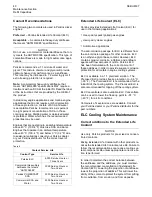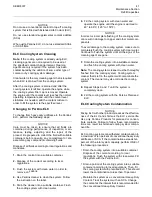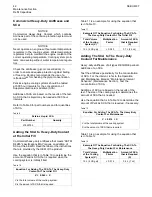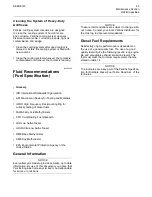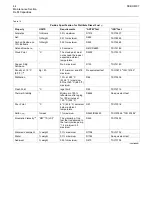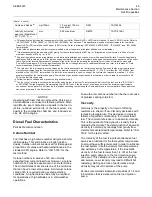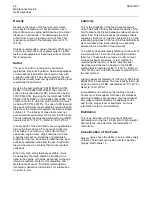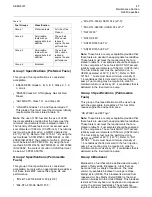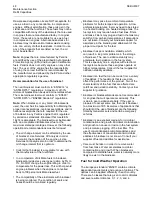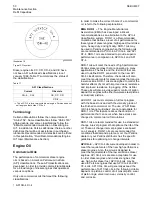
36
SEBU8337
Operation Section
Cold Weather Operation
i02576035
Fuel and the Effect from Cold
Weather
Note:
Only use grades of fuel that are recommended
by Perkins. Refer to this Operation and Maintenance
Manual, “Fluid Recommendations”.
The following fuels can be used in this series of
engine.
•
Group 1
•
Group 2
•
Group 3
•
Special Fuels
Perkins prefer only Group 1 and Group 2 fuels for
use in this series of engines.
Group 1 fuels are the preferred Group of Fuels for
general use by Perkins. Group 1 fuels maximize
engine life and engine performance. Group 1 fuels
are usually less available than Group 2 fuels.
Frequently, Group 1 fuels are not available in colder
climates during the winter.
Note:
Group 2 fuels must have a maximum wear
scar of 650 micrometers (HFRR to ISO 12156-1).
Group 2 fuels are considered acceptable for issues
of warranty. This group of fuels may reduce the life
of the engine, the engine’s maximum power, and the
engine’s fuel ef
fi
ciency.
When Group 2 diesel fuels are used the following
components provide a means of minimizing problems
in cold weather:
•
Glow plugs (if equipped)
•
Engine coolant heaters, which may be an OEM
option
•
Fuel heaters, which may be an OEM option
•
Fuel line insulation, which may be an OEM option
There are three major differences between Group
1 fuels and Group 2 fuels. Group 1 fuels have the
following different characteristics to Group 2 fuels.
•
A lower cloud point
•
A lower pour point
•
A lower energy per unit volume of fuel
Note:
Group 3 fuels reduce the life of the engine. The
use of Group 3 fuels is not covered by the Perkins
warranty.
Group 3 fuels include Low Temperature Fuels and
Aviation Kerosene Fuels.
Special fuels include Biofuel.
The cloud point is a temperature that allows wax
crystals to form in the fuel. These crystals can cause
the fuel
fi
lters to plug.
The pour point is the temperature when diesel fuel
will thicken. The diesel fuel becomes more resistant
to
fl
ow through fuel lines, fuel
fi
lters,and fuel pumps.
Be aware of these facts when diesel fuel is
purchased. Consider the average ambient air
temperature for the engine’s application. Engines
that are fueled in one climate may not operate well if
the engines are moved to another climate. Problems
can result due to changes in temperature.
Before troubleshooting for low power or for poor
performance in the winter, check the fuel for waxing.
Low temperature fuels may be available for engine
operation at temperatures below 0 °C (32 °F). These
fuels limit the formation of wax in the fuel at low
temperatures.
For more information on cold weather operation, refer
to the Operation and Maintenance Manual, “Cold
Weather Operation and Fuel Related Components in
Cold Weather”.

